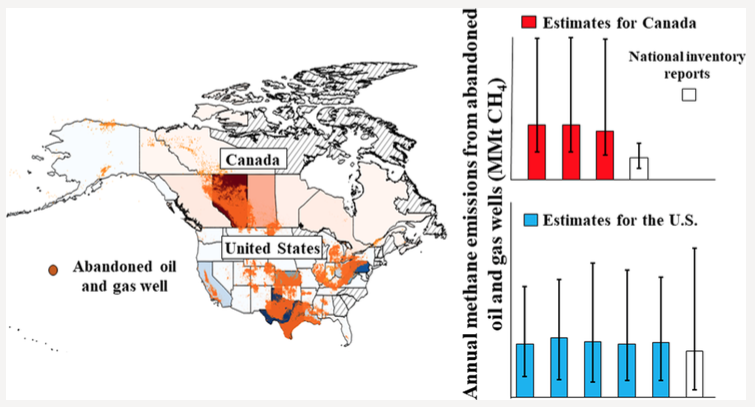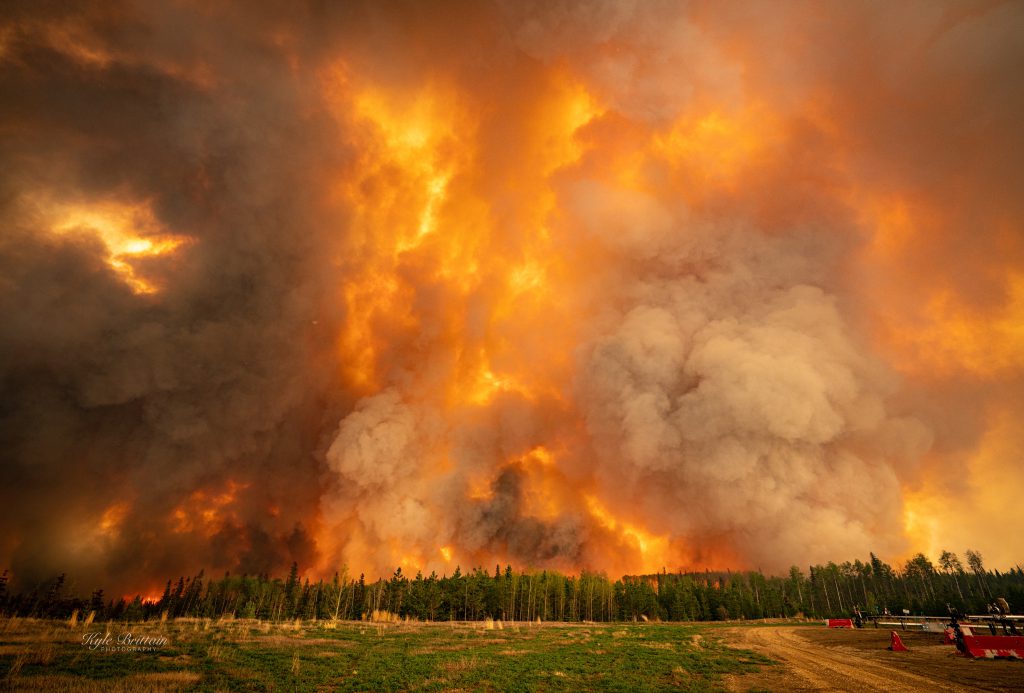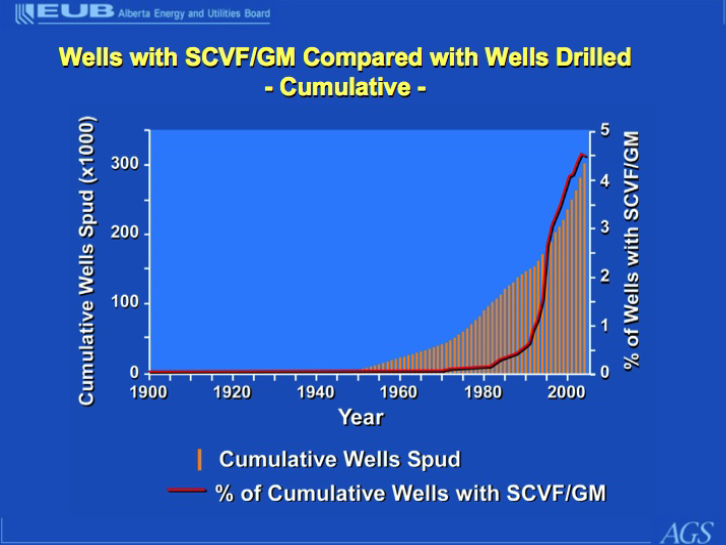
What a vicious circuitous cumulative impact if oil, gas and frac companies’ leaking methane and other gases are igniting and fuelling wildfires which then release massive amounts more methane.
It’s been known for decades that oil, gas and frac companies lie about their life-threatening pollution, as do their self-regulating cover-up agents AER, CER, others provincially and federally, Environment Canada, and the Geological Surveys.
Companies and their pollution enabling self regulators won’t even disclose honestly how much methane they vent intentionally, likely because they are too greedy and irresponsible, murderous in fact, to mitigate their pollution.

Alberta: Super methane polluter
Methane from megafires: More spew than we knew, Novel detection technique raises pollution policy questions by by Jules Bernstein, April 17, 2023, University of California – Riverside
Summary:
Using a new detection method, scientists found a massive amount of methane, a super-potent greenhouse gas, coming from wildfires — a source not currently being accounted for by California state air quality managers.
FULL STORY
Using a new detection method, UC Riverside scientists found a massive amount of methane, a super-potent greenhouse gas, coming from wildfires — a source not currently being accounted for by state air quality managers.
Methane warms the planet 86 times more powerfully than carbon dioxide over the course of 20 years, and it will be difficult for the state to reach its required cleaner air and climate goals without accounting for this source, the researchers said.
Wildfires emitting methane is not new. But the amount of methane from the top 20 fires in 2020 was more than seven times the average from wildfires in the previous 19 years, according to the new UCR study.
“Fires are getting bigger and more intense, and correspondingly, more emissions are coming from them,” ![]() Fracs are getting bigger and bigger too, releasing more and more methane, much of it not captured by well bores
Fracs are getting bigger and bigger too, releasing more and more methane, much of it not captured by well bores![]() said UCR environmental sciences professor and study co-author Francesca Hopkins. “The fires in 2020 emitted what would have been 14 percent of the state’s methane budget if it was being tracked.”
said UCR environmental sciences professor and study co-author Francesca Hopkins. “The fires in 2020 emitted what would have been 14 percent of the state’s methane budget if it was being tracked.”
The state does not track natural sources of methane, like those that come from wildfires. But for 2020, wildfires would have been the third biggest source of methane in the state.
“Typically, these sources have been hard to measure, and it’s questionable whether they’re under our control. But we have to try,” Hopkins said. “They’re offsetting what we’re trying to reduce.”
Traditionally, scientists measure emissions by analyzing wildfire air samples obtained via aircraft. This older method is costly and complicated to deploy. To measure emissions from 2020’s Sequoia Lightning Fire Complex in the Sierra Nevadas, the UCR research team used a remote sensing technique, which is both safer for scientists and likely more accurate since it captures an integrated plume from the fire that includes different burning phases.
The technique, detailed in the journal Atmospheric Chemistry and Physics, allowed the lead author, UCR environmental sciences Ph.D. student Isis Frausto-Vicencio to safely measure an entire plume of the Sequoia Lightning Fire Complex gas and debris from 40 miles away.
“The plume, or atmospheric column, is like a mixed signal of the whole fire, capturing the active as well as the smoldering phases,” Hopkins said. “That makes these measurements unique.”
Rather than using a laser, as some instruments do, this technique uses the sun as a light source. Gases in the plume absorb and then emit the sun’s heat energy, allowing insight into the quantity of aerosols as well as carbon and methane that are present.
Using the remote technique, the researchers found nearly 20 gigagrams of methane emitted by the Sequoia Lightning Fire Complex. One gigagram is 1,000 metric tons. An elephant weighs around one metric ton. For context, the fire therefore contained roughly 20,000 elephants’ worth of the gas.
This data matches measurements that came from European space agency satellite data, which took a more sweeping, global view of the burned areas, but are not yet capable of measuring methane in these conditions.
If included in the California Air Resources Board methane budget, wildfires would be a bigger source than residential and commercial buildings, power generation or transportation, but behind agriculture and industry. While 2020 was exceptional in terms of methane emissions, scientists expect more megafire years going forward with climate change.
In 2015, the state first established a target of 40 percent reduction in methane, refrigerants and other air pollutants contributing to global warming by 2030. The following year, in 2016, Gov. Jerry Brown signed SB 1383, codifying those reduction targets into law.
The reductions are meant to come from regulations that capture methane produced from manure on dairy farms, eliminate food waste in landfills, require oil and gas producers to minimize leaks![]() But are companies heeding the requirements?
But are companies heeding the requirements?![]() , ban certain gases in new refrigerators and air conditioners, and other measures.
, ban certain gases in new refrigerators and air conditioners, and other measures.
“California has been way ahead on this issue,” Hopkins said. ‘We’re really hoping the state can limit the methane emissions under our control to reduce short-term global warming and its worst effects, despite the extra emissions coming from these fires.”
Story Source:
Materials provided by University of California – Riverside. Original written by Jules Bernstein.
Journal Reference:
- Isis Frausto-Vicencio, Sajjan Heerah, Aaron G. Meyer, Harrison A. Parker, Manvendra Dubey, Francesca M. Hopkins. Ground solar absorption observations of total column CO, CO2, CH4, and aerosol optical depth from California’s Sequoia Lightning Complex Fire: emission factors and modified combustion efficiency at regional scales. Atmospheric Chemistry and Physics, 2023; 23 (7): 4521 DOI: 10.5194/acp-23-4521-2023
Abstract
With global wildfires becoming more widespread and severe, tracking their emissions of greenhouse gases and air pollutants is becoming increasingly important. Wildfire emissions have primarily been characterized by in situ laboratory and field observations at fine scales. While this approach captures the mechanisms relating emissions to combustion phase and fuel properties, their evaluation on regional-scale plumes has been limited. In this study, we report remote observations of total column trace gases and aerosols during the 2020 wildfire season from smoke plumes in the Sierra Nevada of California with an EM27/SUN solar Fourier transform infrared (FTIR) spectrometer. We derive total column aerosol optical depth (AOD), emission factors (EFs) and modified combustion efficiency (MCE) for these fires and evaluate relationships between them, based on combustion phase at regional scales. We demonstrate that the EM27/SUN effectively detects changes in CO, CO2, and CH4 in the atmospheric column at ∼10 km horizontal scales that are attributed to wildfire emissions. These observations are used to derive total column EFCO of 120.5±12.2 and EF of 4.3±0.8 for a regional smoke plume event in mixed combustion phases. These values are consistent with in situ relationships measured in similar temperate coniferous forest wildfires. FTIR-derived AOD was compared to a nearby AERONET (AErosol RObotic NETwork) station and observed ratios of XCO to AOD were consistent with those previously observed from satellites. We also show that co-located XCO observations from the TROPOspheric Monitoring Instrument (TROPOMI) satellite-based instrument are 9.7±1.3 % higher than our EM27/SUN observations during the wildfire period. Finally, we put wildfire CH4 emissions in context of the California state CH4 budget and estimate that 213.7±49.8 Gg CH4 were emitted by large wildfires in California during 2020, about 13.7 % of the total state CH4 emissions in 2020. Our work demonstrates a novel application of the ground-based EM27/SUN solar spectrometers in wildfire monitoring by integrating regional-scale measurements of trace gases and aerosols from smoke plumes.
…
Finally, we find that a significant amount of CH4 was emitted from the largest 20 wildfires of 2020 in California. Given the importance of the CH4 emissions reduction for the state, our study suggests that wildfires are an important source of CH4 for California and may delay the meeting of the state’s ambitious goals for reducing greenhouse gas emissions. Atmospheric CH4 emissions released during wildfire periods should also be accounted for in statewide greenhouse gas inventories, as wildfire CH4 enhancements are clearly measurable, and their yearly emissions are comparable to or larger than other CH4 sectors. Overall, our analysis contributes to the development of techniques for analyzing remotely sensed greenhouse gases and aerosol measurements from wildfires.
– Discussion started: 14 Oct 2022
– Revised: 14 Feb 2023
– Accepted: 27 Feb 2023
– Published: 14 Apr 2023

Refer also to:

Fox Creek Fire photo by Kyle Brittain. The fire has surrounded the town.
***
Examples such as these below are everywhere oil and gas and frac’ers are or were, especially in Canada. Instead of ordering companies to stop their deadly venting and leaking, authorities keep letting companies create more hazards, licencing more and more leaking wells (studies show that new wells are leaking worse than old ones), facilities and fracs:
Citizen Complaint Finds ‘Bubbling’ Gas Well
In response to a citizen complaint, on May 15 DEP inspected two conventional gas wells owned by John Schenker in Cussewago Township, Crawford County known as James R. Brown 1 and Ridgefield Farms 6. Both wells had not been inspected in 10 years. The inspector heard “bubbling” coming from the ground around the casing of the James R. Brown 1 well, rusted piping and well head, 4,200 gallon steel production wastewater tank and other equipment at the site. [DEP inspection report]

Above graph from a 2007 presentation by the energy industry’s self regulator in Alberta
SCVF = Surface casing vent flow
GM = Gas migration
Tatonka Oil Co. LLC’s Nancy 13 Conventional Well Leaking Since 2018
On May 17, 2023, a DEP followup inspection at a Tatonka Oil Co. LLC conventional well site known as Nancy 13 in Deerfield Township, Warren County found it to be still venting natural gas to the atmosphere. [DEP inspection report] DEP noted a continuing violation for abandoning the well without plugging it and for drilling, altering or operating a well without a permit.
